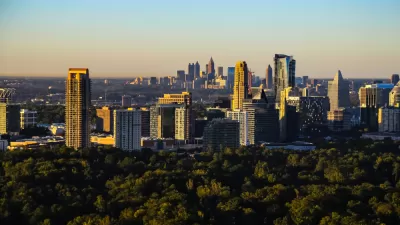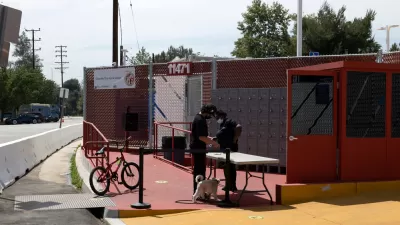In Haiti, displacement camps full of people left without homes after the devastating January earthquake are becoming more and more permanent. Deborah Gans argues that these sites should be more carefully planned to foster functioning places.
As planners in Haiti consider the idea of decentralizing those forced to leave the country's destroyed capital, displacement camos could play home to future permanent developments.
"To restore lands and create managed ecosytems, the United Nations has begun to experiment with the idea of camps as permaculture - a neologistic combination of permanent and agriculture that refers to a mutually sustained relationship among settlement, economy and ecology. In Zimbabwe, for example, at the Tongogara camp, 1,800 refugees farm cotton and indigenous and imported vegetables in labor-intensive plots of 1 to 3 hectares (2.5 to 7.5 acres) for their own consumption and profit. The UN uses the same strategies in both the camps and villages that neighbor disaster relief sites. The bio-engineering used to control erosion in the Beldangi-I refugee camp in Nepal, for example, came from a successful project in the adjoining village of Madhumalla, which was similarly effected by monsoon flooding. Subsequent UN-sponsored workshops brought together both local residents and refugees in their shared goal of land reclamation for commercial agro-forestry. The permaculture camp and the permaculture village are, ideally, indistinguishable."
FULL STORY: Haiti and the Potential of Permaculture

Alabama: Trump Terminates Settlements for Black Communities Harmed By Raw Sewage
Trump deemed the landmark civil rights agreement “illegal DEI and environmental justice policy.”

Planetizen Federal Action Tracker
A weekly monitor of how Trump’s orders and actions are impacting planners and planning in America.

Why Should We Subsidize Public Transportation?
Many public transit agencies face financial stress due to rising costs, declining fare revenue, and declining subsidies. Transit advocates must provide a strong business case for increasing public transit funding.

Understanding Road Diets
An explainer from Momentum highlights the advantages of reducing vehicle lanes in favor of more bike, transit, and pedestrian infrastructure.

New California Law Regulates Warehouse Pollution
A new law tightens building and emissions regulations for large distribution warehouses to mitigate air pollution and traffic in surrounding communities.

Phoenix Announces Opening Date for Light Rail Extension
The South Central extension will connect South Phoenix to downtown and other major hubs starting on June 7.
Urban Design for Planners 1: Software Tools
This six-course series explores essential urban design concepts using open source software and equips planners with the tools they need to participate fully in the urban design process.
Planning for Universal Design
Learn the tools for implementing Universal Design in planning regulations.
Caltrans
Smith Gee Studio
Institute for Housing and Urban Development Studies (IHS)
City of Grandview
Harvard GSD Executive Education
Toledo-Lucas County Plan Commissions
Salt Lake City
NYU Wagner Graduate School of Public Service





























